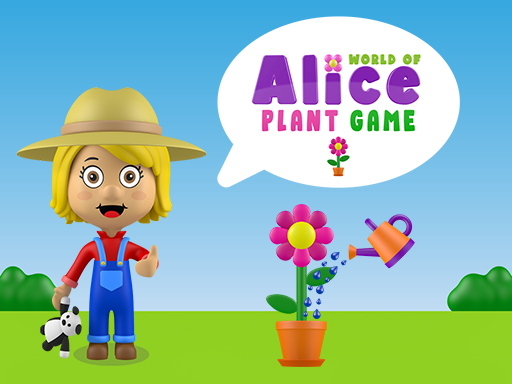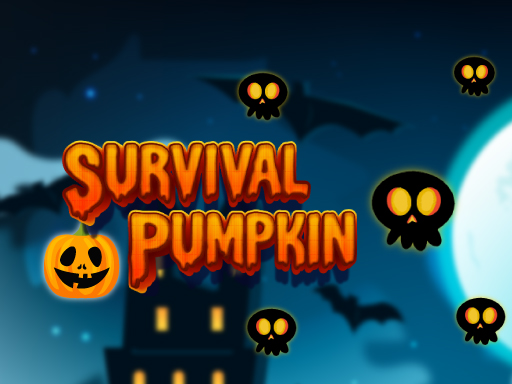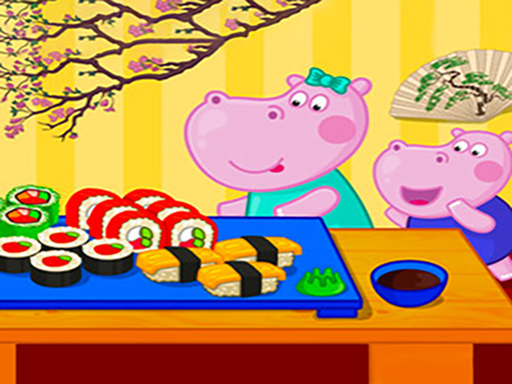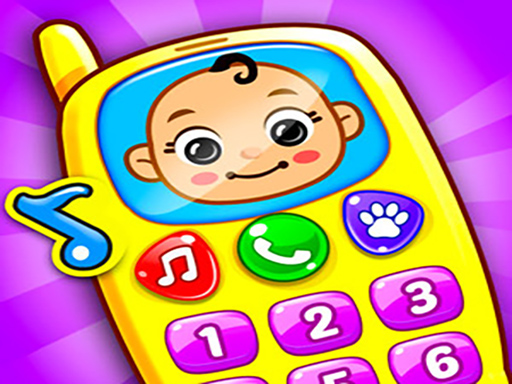
🌱 World of Alice – Plant Game: Growing Curiosity, One Leaf at a Time
When Learning Starts With a Seed
Every great adventure begins small — sometimes as small as a seed. Imagine sitting beside your child, tablet in hand, watching as a tiny sprout pushes its way out of digital soil. “Look, Mom! It’s growing!” your child shouts, their eyes wide with wonder. That’s not just a game moment — that’s learning in bloom.
Welcome to World of Alice – Plant Game, an enchanting, child-friendly journey that turns biology into a playground. Developed with education in mind, this game helps children understand how plants grow, what they need, and why patience (yes, that elusive skill!) pays off. The game takes players through each stage of plant development — from seed to sprout, from budding to blooming — using colorful visuals, friendly guidance, and a pinch of playfulness.
The heart of World of Alice – Plant Game lies in its simplicity. Players click or tap on the correct answers to help their plant grow. It sounds easy, but it cleverly blends entertainment with knowledge retention. Each successful action triggers visible growth, and every correct answer becomes a reward — not just on screen, but inside the learner’s mind.
Have you ever noticed how kids remember things better when they laugh or play? This game takes full advantage of that principle. It’s not about rote memorization; it’s about joyful discovery. And that’s what makes it shine among educational games — it feels like fun, not homework.
Now that our digital seedling has sprouted, let’s dig a little deeper into what makes this learning garden thrive — from gameplay and design to the hidden lessons it plants in every child’s imagination.
The Heart of the Game: Where Play Meets Purpose
Gameplay Mechanics That Nurture the Mind
In World of Alice – Plant Game, every click is a lesson disguised as fun. The controls couldn’t be simpler: children click or tap on the correct answer when prompted — maybe about sunlight, water, or soil — and the plant responds instantly. The more right answers they choose, the taller and happier their plant grows.
This cause-and-effect loop is magical for kids. It reinforces the concept that actions have results — an idea at the core of both learning and life. And unlike many fast-paced games, there’s no pressure or countdown timer here. Children are encouraged to think, reflect, and choose mindfully.
Parents watching from the sidelines often find themselves whispering, “Try water first!” or “Don’t forget the sun!” before realizing — they’re learning too! That’s the charm: World of Alice quietly transforms screen time into bonding time.
The user interface is bright, warm, and intuitive. The sounds are gentle, the animations smooth, and every element feels designed to inspire calm curiosity rather than overstimulation. It’s a digital greenhouse — one that welcomes children to explore science with confidence.
Objectives That Bloom Naturally
The game’s objective is delightfully straightforward: help your plant grow by choosing the right answers. But beneath that simplicity lies a well-rooted educational structure. It teaches:
- The essential needs of plants: sunlight, water, air, and nutrients.
- The sequence of plant growth stages.
- Environmental awareness and responsibility.
There’s even an emotional layer — children often feel pride in “their” plant. It’s no longer just a screen character; it becomes their creation, something they helped nurture. And that emotional investment is a powerful motivator for continued play and learning.
But gameplay is just the soil. Let’s see how strategy — yes, even gentle strategy — helps the little ones grow smarter with each click.
Planting Strategy: How Kids (and Parents) Can Thrive
For Little Learners: Small Steps, Big Smiles
For children, World of Alice – Plant Game offers a beautifully simple path to success. The secret? Encouragement and curiosity. Here’s a mini guide to help your young gardener blossom:
- Start slow. Let your child explore the interface freely before guiding them.
- Celebrate small wins. Every sprout or bloom deserves a cheer!
- Ask reflective questions. “Why do you think the plant needs sunlight?” sparks deeper understanding.
- Play together. The shared excitement strengthens both knowledge and connection.
- Let them make mistakes. Wrong answers become wonderful teaching moments.
What’s truly special here is that children aren’t just learning facts — they’re learning how to learn. The game encourages experimentation without fear. When kids click the wrong answer, the plant simply doesn’t grow, prompting them to rethink rather than recoil. It’s gentle correction done right.
For Parents and Educators: Growing More Than Plants
Adults might smile at the colorful graphics, but World of Alice is a quiet triumph in educational design. It turns complex biological concepts into accessible interactions. Teachers can use it as a classroom supplement, and parents can use it as a weekend learning adventure.
Here’s a quick table to illustrate how different age groups benefit:
| Age Group | Skill Developed | How the Game Helps |
|---|---|---|
| 3–5 years | Observation & curiosity | Visual cues encourage cause-and-effect learning |
| 6–8 years | Critical thinking | Decision-making grows stronger through problem-solving |
| 9–12 years | Responsibility & memory | Caring for the plant reinforces long-term understanding |
It’s no wonder early childhood educators often recommend blending interactive media with real-world practice — perhaps planting an actual seed after playing. The transition from screen to soil brings learning full circle.
Now that we’ve got the basics of nurturing and strategy down, let’s peek under the digital leaves and explore what emotional seeds this game plants in young hearts.
The Emotional Roots of Play: Why This Game Feels Alive
Curiosity, Pride, and the Joy of Growth
Every time a child sees their plant grow taller, there’s a flicker of pride that crosses their face — the same pride a gardener feels when the first bud opens in spring. That small burst of accomplishment keeps them coming back, again and again.
The developers of World of Alice understood something vital: children don’t just crave fun; they crave progress they can see. By turning growth into a visible, rewarding process, the game taps into a deeply human satisfaction — nurturing something from start to finish.
Have you ever noticed how kids mimic care? They water their plant gently, tilt the device “toward the sun,” or even talk to their on-screen greenery. That’s empathy in training.
Mini-Dialogues That Spark Imagination
You might hear exchanges like:
“What happens if we give it too much water?”
“Let’s find out! Oh no, it stopped growing. Maybe it’s thirsty for sunlight instead!”
Those little conversations are golden. They turn knowledge into narrative, transforming lessons into adventures.
(Transition)
So far, we’ve seen how the game teaches and touches hearts. Now, let’s shift gears and look at how it builds real-world skills beyond the screen.
Beyond the Screen: Lessons That Last
From Virtual Soil to Real Gardens
One of the most beautiful aspects of World of Alice – Plant Game is its bridge between virtual learning and real-life curiosity. After a few sessions, many kids start asking real questions:
- “Can we plant a seed in the backyard?”
- “Why do plants need soil if they can grow in water?”
- “Does sunlight help all plants the same way?”
That’s when parents know something magical has happened — the game has taken root in real learning. It sparks outdoor activity, patience, and appreciation for nature.
Parents can easily extend the fun by planting real seeds at home. Watching a sprout appear in real life, after seeing it happen in the game, gives children a tangible sense of cause and effect. You might even integrate it with resources like National Geographic Kids for fun plant facts and experiments.
Soft Skills Hidden in Play
It’s not just about plants, either. Through gentle repetition, children absorb life skills like:
- Patience — waiting for growth.
- Responsibility — caring consistently.
- Observation — noticing small changes.
- Problem-solving — figuring out what the plant needs.
- Confidence — celebrating success and learning from mistakes.
When you think about it, World of Alice – Plant Game isn’t just cultivating plants — it’s cultivating character.
(Transition)
But learning doesn’t end when the plant reaches full bloom. There’s always another layer to explore, another seed to plant, another story to grow.
A World That Keeps Growing
The Bigger Picture: Education as Adventure
The World of Alice series, of which the Plant Game is a shining example, follows a clear philosophy: learning should feel like play, and play should feel like discovery. It’s a bridge between imagination and education, designed for mobile, tablet, and computer — accessible wherever curiosity calls.
Children today are surrounded by technology. What this game does brilliantly is turn that screen time into meaningful time. Instead of scrolling mindlessly, kids are building knowledge, guided by visuals, interactivity, and their own curiosity.
It’s an approach that aligns beautifully with modern educational standards, echoing insights from child learning experts around the world. The focus is on active participation, gentle reinforcement, and positive feedback loops — a trio that helps children thrive both cognitively and emotionally.
Why It Matters (Even for Adults)
If you’ve ever grown a real plant, you know the joy of nurturing something with care. Watching it respond — one leaf at a time — is oddly satisfying. This game captures that same energy, making it approachable even for adults. Parents often report feeling oddly calm while watching the plant grow, describing it as “therapeutic.”
It’s a reminder that learning doesn’t stop at childhood. The game quietly teaches all of us — kids and adults alike — to slow down, to appreciate progress, and to celebrate patience in a world obsessed with speed.
Before we wrap up this digital gardening journey, let’s collect a few golden rules every player — young or old — can carry forward.
Final Reflections: Growing Together
The best games leave you with something more than just high scores. They leave you with thoughts, feelings, and — sometimes — newfound wisdom. World of Alice – Plant Game does exactly that. It plants seeds of curiosity that grow into lifelong appreciation for nature, learning, and patience.
Here’s a quick recap of what makes this game such a blooming success:
- Simple, intuitive gameplay that teaches through doing.
- Bright, soothing visuals that engage without overwhelming.
- Lessons that move seamlessly from screen to real life.
- Emotional connection that fosters empathy and care.
- Opportunities for parents and kids to learn together.
It’s a rare gem — an educational tool that truly understands the heart of childhood learning: discovery through play.
And maybe, just maybe, that’s something we adults could use more of, too.
So, next time you open World of Alice – Plant Game, take a breath. Watch the digital sun rise over your pixelated garden. Smile at that tiny seedling you helped grow. Because whether on screen or in soil, growth always begins with curiosity. 🌱
For Your Social:
#WorldOfAlice #PlantGame #EducationalGames #LearningThroughPlay #ParentingFun #KidsAndTech #NatureLovers #STEMLearning






